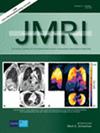Enabling AI-Generated Content for Gadolinium-Free Contrast-Enhanced Breast Magnetic Resonance Imaging
Abstract
Background
There is increasing interest in utilizing AI-generated content for gadolinium-free contrast-enhanced breast MRI.
Purpose
To develop a generative model for gadolinium-free contrast-enhanced breast MRI and evaluate the diagnostic utility of the generated scans.
Study Type
Retrospective.
Population
Two hundred seventy-six women with 304 breast MRI examinations (49 ± 13 years, 243/61 for training/testing).
Field Strength/Sequence
ZOOMit diffusion-weighted imaging (DWI), T1-weighted volumetric interpolated breath-hold examination (T1W VIBE), and axial T2 3D SPACE at 3.0 T.
Assessment
A generative model was developed to generate contrast-enhanced scans using precontrast T1W VIBE and DWI images. The generated and real images were quantitatively compared using the structural similarity index (SSIM), mean absolute error (MAE), and Dice similarity coefficient. Three radiologists with 8, 5, and 5 years of experience independently rated the image quality and lesion visibility on AI-generated and real images within various subgroups using a five-point scale. Four breast radiologists, with 8, 8, 5, and 5 years of experience, independently and blindly interpreted four reading protocols: unenhanced MRI protocol alone and combined with AI-generated scans, abbreviated MRI protocol, and full-MRI protocol.
Statistical Analysis
Results were assessed using t-tests and McNemar tests. Using pathology diagnosis as reference standard, sensitivity, specificity, positive predictive value (PPV), and negative predictive value (NPV) were calculated for each reading protocol. A P value <0.05 was considered significant.
Results
In the test set, the generated images showed similarity to the real images (SSIM: 0.935 ± 0.047 [SD], MAE: 0.015 ± 0.012 [SD], and Dice coefficient: 0.726 ± 0.177 [SD]). No significant difference in lesion visibility was observed between real and AI-generated scans of the mass, non-mass, and benign lesion subgroups. Adding AI-generated scans to the unenhanced MRI protocol slightly improved breast cancer detection (sensitivity: 92.86% vs. 85.71%, NPV: 76.92% vs. 70.00%); achieved non-inferior diagnostic utility compared to the AB-MRI protocol and full-protocol (sensitivity: 92.86%, 95.24%; NPV: 75.00%, 81.82%).
Data Conclusion
AI-generated gadolinium-free contrast-enhanced breast MRI has potential to improve the sensitivity of unenhanced MRI in detecting breast cancer.
Evidence Level
4
Technical Efficacy
Stage 3

 求助内容:
求助内容: 应助结果提醒方式:
应助结果提醒方式:


